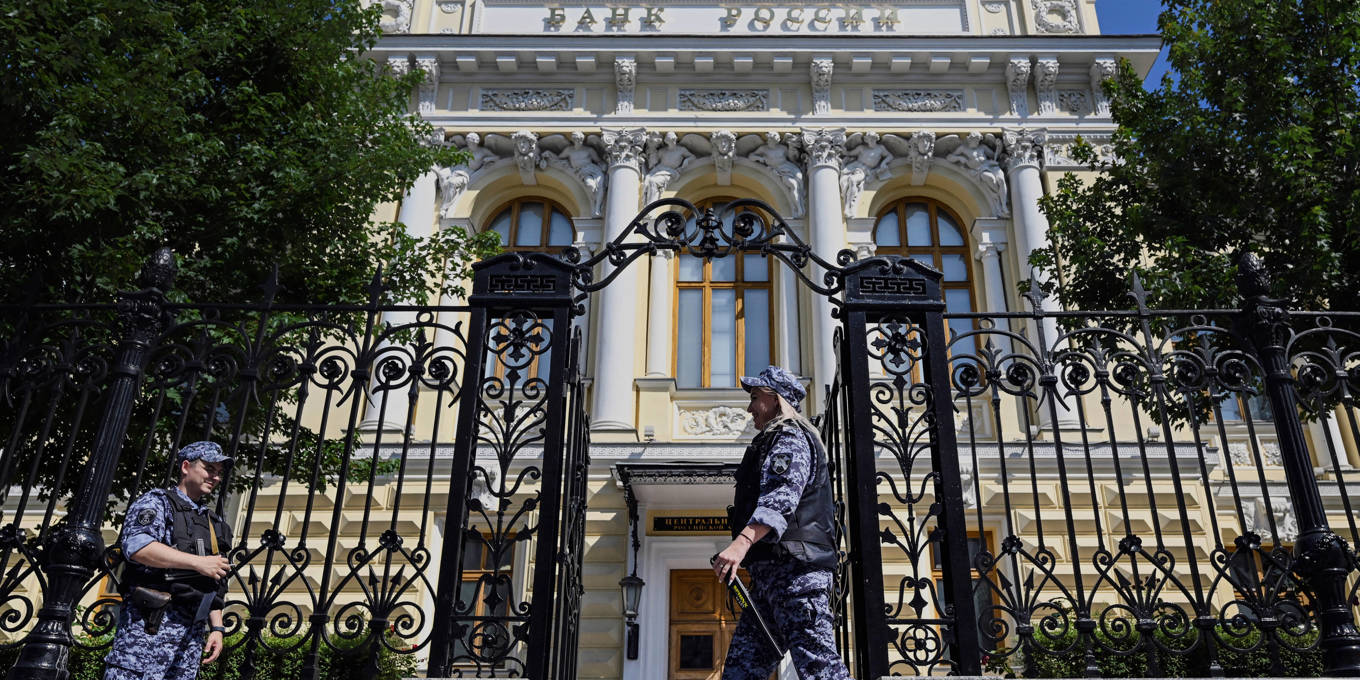cross-posted from: https://lemmy.sdf.org/post/40109931
[…]
Since October 2024, the Kremlin itself has begun to report that Russia is experiencing stagflation – a message that was reinforced at the annual St. Petersburg International Economic Forum in June.
Improvement is unlikely. The country’s financial reserves are running out, energy revenues are declining, and there are increasingly severe shortages of labor and imported technology. All are linked to the war and Western sanctions.
Since 2022, Russia has had an annual budget deficit of about 2% of GDP, implying that it needs $40 billion each year to close the gap. But owing to Western financial sanctions, Russia has had virtually no access to international financing since 2014. Not even China dares to finance the Russian state openly, for fear of secondary sanctions. (Indeed, two small Chinese banks were just sanctioned by the European Union for such sins.) So, Russia must make do with the liquid financial resources held in its National Wealth Fund. Having fallen from $135 billion in January 2022 to $35 billion by May 2025, these are set to run out in the second half of this year.
Traditionally, half of Russia’s federal revenues have come from energy exports, which used to account for two-thirds of its total exports. But in the face of Western sanctions, Russian total exports have slumped, falling by 27%, from $592 billion to $433 billion, between 2022 and 2024. The federal budget for 2025 assumed an oil price of $70 per barrel, but oil is now hovering closer to the Western price cap of $60 per barrel, and the EU has just set a ceiling of $47.6 per barrel for the Russian oil that it still purchases. In addition, the West has sanctioned nearly 600 Russian “shadow fleet” tankers, which will reduce Russian federal revenues by at least 1% of GDP.
[…]
Against this backdrop, the Kremlin has announced that while it intends to spend 37% of its federal budget – $195 billion (7.2% of GDP) – on national defense and security this year, it must cut federal expenditures from 20% of GDP to about 17%. But since the government has already cut non-military expenditures to a minimum, it claims that it will reduce its military expenditures by some unspecified amount in 2026.
[…]
Of course, actual economic strength is not the issue. Ukraine spends about $100 billion per year on its defense, which amounts to 50% of its GDP; but no one bothers to question this, because for Ukrainians, the war is existential. Ukraine would not survive if the war was lost. By contrast, Russia spends only 7% of its GDP on the war, but this is a war of Putin’s choice. It is not existential for Russia, only for Putin.
[…]
Meanwhile, it is increasingly clear that something else is rotten in Russia beside the economy. Russia has fallen to 154th place out of 180 countries on Transparency International’s authoritative Corruption Perceptions Index […[. Since the start of the war, a dozen or so senior Russian energy managers have fallen out of windows. And more recently, former Deputy Defense Minister Timur Ivanov was sentenced to no less than 13 years in prison for corruption; Transportation Minister Roman Starovoit allegedly committed suicide just hours after Putin fired him; and a gold-mining billionaire was arrested, and his company was nationalized to help the treasury.
[…]
Russia’s economy is fast approaching a fiscal crunch that will encumber its war effort. Russia’s seven-month budget deficit exceeded the target for the entire year by a quarter, Finance Ministry data showed on Thursday, highlighting the strain of financing the war in Ukraine.
The ministry reported that expenditures from January to July amounted to 25.19 trillion roubles, an increase of 20.8% compared to the same period last year. Meanwhile, revenues increased by only 2.8% year-on-year to 20.32 trillion roubles.
“This is mainly due to the advanced financing of expenses in January of the current year, as well as a decrease in oil and gas revenue inflows,” the ministry said, emphasizing that the current figure will not affect the annual target.
[…]


